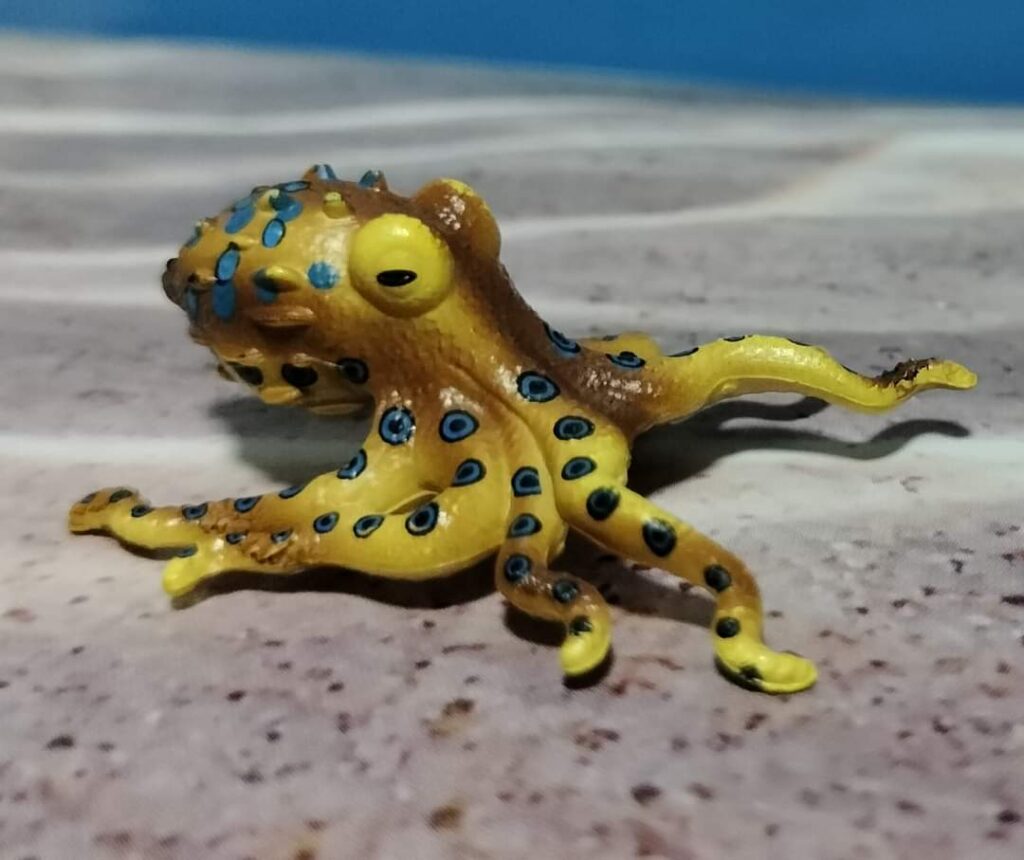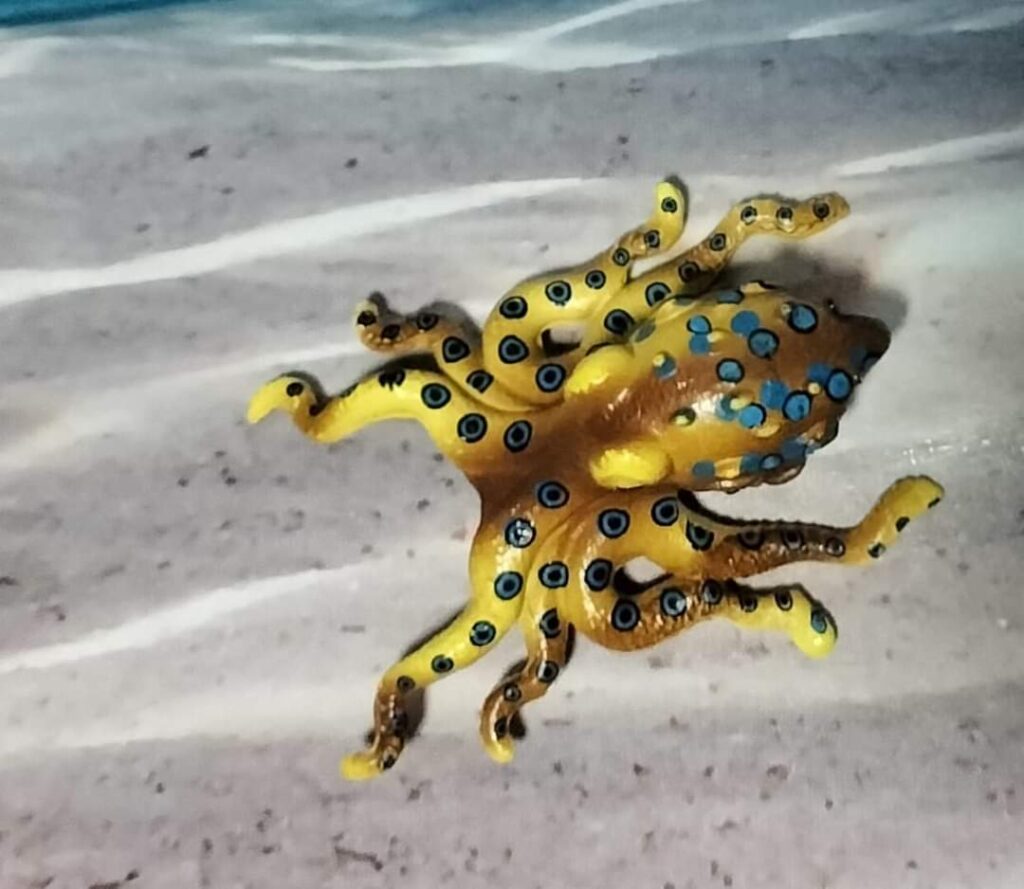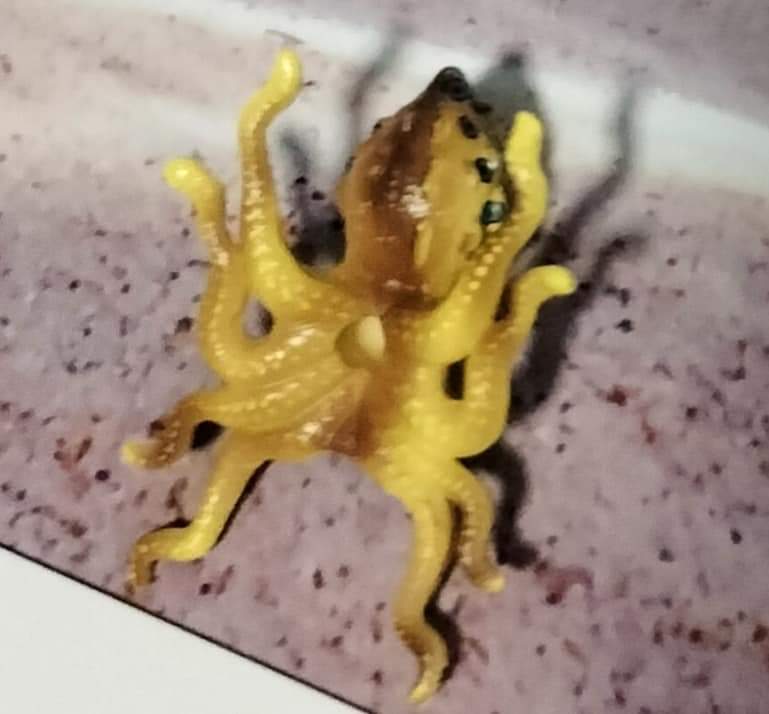Review and images by JimoAi; edited by bmathison1972
Octopuses in the genus Hapalochlaena are probably the most striking out of them all, especially with their yellowish bodies and iconic blue rings on their bodies, which become more vibrant when threatened (although one species, Hapalochlaena fasciata, has lines rather than rings on its mantle). They are found in tropical coral reefs and tide pools in the Pacific and Indian Oceans, from Japan to Australia. These octopuses are usually small, not getting past 20 cm in arm width, and like all octopuses they are carnivorous, preying on crustaceans and other small animals. Besides their blue rings, they are also famous for their toxicity. All octopuses are at least somewhat venomous, but the blue-ringed octopuses possess venom that is 10,000x more potent than cyanide and one tiny octopus is able to kill 26 humans, and there is no known antivenom. Despite this, they are still preyed on by larger fish, which strike before the octopus has a chance to bite back. These octopuses are classed as ‘Least Concern’ by the IUCN with stable populations that isn’t under threat. Today’s blue-ringed octopus was produced by Toys Spirits in their 3D Picture Book series.

About the figure: this blue-ringed octopus has a mantle size of 1.5 cm, which puts it at the 1:2-1:3.33 scale. This octopus is sculpted with each half of its arms facing a different direction, probably crawling on the ocean floor.

The paintjob of the figure is pretty standard for a blue-ringed octopus: yellow for the main body, airbrushed brown on parts of the top, and blue rings across the arms and part of the mantle. The blue rings do have a notable error where the centre should be either yellow or brown depending on which part the body is. Because of that, I am unsure which species to identify this figure as, so I’m databasing it as Hapalochlaena sp., with some of mine having misprinted rings. The eye is only distinguished by a horizontal slit pupil, and an outline on the eyes would definitely help them stick out more.

For the sculpt, it’s passable. There are 8 arms in total, typical for octopi, however 2 are noticeably shorter than the rest and one of them ending without the tip, probably giving the illusion it has lost a part of its arm. I feel the eyes pop out way too much, giving the animal a frog-like appearance. There are sculpted flaps of skin through the mantle and there’s a pointed tip on the edge of the mantle. Going to the bottom, there are sculpted suckers, but for being a really tiny figure, they are difficult to pick out and there’s a noticeable hole in the middle where the beak should be (I should point out that this figure comes attacked to a mini booklet, which I didn’t have as I got the figure on its own).

Overall, this blue-ringed octopus is a serviceable figure. While it’s far from the worst serious attempt at an octopus figure, I feel it’s the weakest compared to most blue-ringed octopus figures in the market, including those by Nayab, Kaiyodo, Bullyland, and the new The Access Toys figure what comes with other dangerous sea animals. I am not sure how rare this figure is, as I bought mine for less than half a dollar, but I don’t see it pop up often and I don’t think it’s worth chasing especially there being other better options, with the Kaiyodo and Bullyland versions being able to be used as life-sized replicas and both representing different species. The main thing going for the Toy Spirits toy is the small size, keeping in scale with many larger sea animal figures. It’s also a treat to see octopuses that aren’t common, Giant Pacific or Dumbo/flapjack being made, and here’s hoping to a mimic octopus being made in the future!
With the larger Kaiyodo blue-lined octopus:

Compared to a 1:2 scale Squidward:

Disclaimer: links to Ebay and Amazon on the AnimalToyBlog are affiliate links, so we make a small commission if you use them. Thanks for supporting us!



